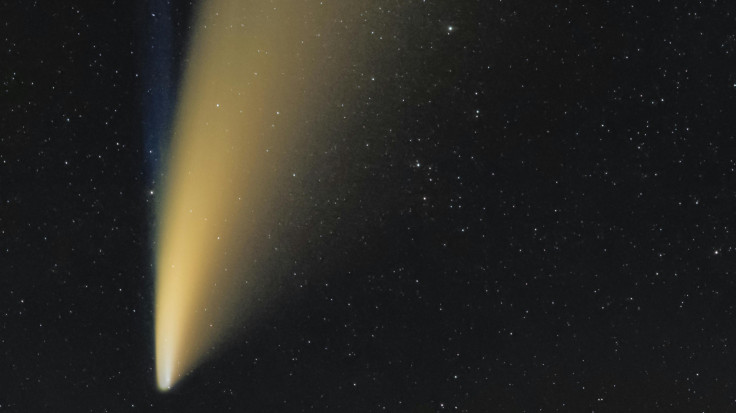3I/ATLAS: NASA Scientists Reveal Truth Behind the 'Colour-Changing' Space Visitor
Experts debunk myths about 3I/ATLAS, revealing what's really behind its mysterious glow.

When 3I/ATLAS blazed into view this summer, astronomers and sky-watchers alike were captivated. Reports erupted across social media and news outlets claiming the interstellar object had dramatically changed colours mid-flight—allegedly shifting from fiery red to ghostly green as it swung past the Sun.
But according to NASA-linked scientists, the spectacle may have been more illusion than transformation. A new analysis is cutting through the noise, revealing a much simpler—yet no less fascinating—explanation for the world's latest celestial visitor.
The Third Visitor From Beyond Our Solar System: 3I/ATLAS's Unusual Journey
Discovered in July, 3I/ATLAS is only the third verified interstellar object ever detected, following 'Oumuamua in 2017 and 2I/Borisov in 2019.
As this rare traveller made its closest approach to the Sun on 30 October, three solar observatories captured breathtaking images showing it flare in brightness.
Astronomers observed that it appeared 'distinctly bluer than the Sun', according to findings published in a preprint on arXiv.
That description alone was enough to spark global headlines suggesting that 3I/ATLAS had changed colour multiple times.
But Qicheng Zhang, a postdoctoral fellow at Lowell Observatory in Arizona, says that interpretation misses the mark.
In comments to Space.com, Zhang clarified: 'We don't have any evidence for the gas coma changing colours. Our result just showed that the gas coma is likely still around and contributing substantially to the overall brightness.'
Scientists Say the Blue-Green Glow of 3I/ATLAS Is No Mystery at All
Despite the hype, the blue-green hue surrounding 3I/ATLAS is perfectly normal and scientifically predictable. Comets, often dubbed 'dirty snowballs', release gas and dust as solar heat vaporises their icy surfaces.
As sunlight interacts with molecules like diatomic carbon (C₂) and cyanogen (CN), they emit a bluish-green glow familiar to astronomers observing similar comets.
According to Zhang, this process began as early as September when amateur astronomers first noticed a shimmering green halo encircling the object. 'As far as we know, the comet just "changed colour" once when its gas coma first became visible or bright, and it's still like that now — only brighter,' he said.
3I/ATLAS Suddenly Begins ERUPTING with Jets of Plasma 💥V1 BORISOV DISAPPEARS https://t.co/tvjIAvllgc
— Stefan Burns (@StefanBurnsGeo) November 8, 2025
Why the Lack of a Tail Adds to the 3I/ATLAS Debate
Adding fuel to the intrigue, fresh images taken on 5 November from the R. Naves Observatory in Spain show 3I/ATLAS lacking a visible tail, a defining feature of comets.
This anomaly has left many astrophysicists puzzled. Harvard scientist Avi Loeb told The New York Post that if the interstellar object continues to show no tail, 'it is likely not a naturally occurring comet'.
His Medium analysis argues that such a result challenges traditional comet models, which predict a visible tail formed by overwhelming solar heating and massive gas release.
The Anomalies Raising Eyebrows Among Scientists
Loeb has documented nearly a dozen anomalies that set 3I/ATLAS apart. The comet has brightened fivefold since perihelion, shows an unusual anti-tail pointing toward the Sun, and follows a hyperbolic trajectory, meaning it hails from outside our Solar System.
Adding to the fascination, Loeb notes that its immense size — roughly comparable to Manhattan — and its motion suggest a unique form of non-gravitational acceleration.
For some, that's enough to reignite whispers of alien-engineered propulsion, though NASA maintains it remains a purely natural object.
The Japanese strike again with a breathtaking view of 3i Atlas #3IATLAS pic.twitter.com/ydMoDjUq6u
— 1000waysto live (@1000waystoair) November 4, 2025
What Comes Next for 3I/ATLAS?
3I/ATLAS will reach its nearest point to Earth in late December, about 170 million miles away, before it exits the Solar System in January. Loeb has called on NASA to release high-resolution images captured by the Mars Reconnaissance Orbiter's HiRise camera, which he says could provide crucial insights once federal operations resume.
As he told reporters: 'When you have a visitor to your backyard, you better know its nature.'
The enigma of 3I/ATLAS is a thrilling reminder of how little we truly know about our cosmic neighbourhood. Whether it proves to be a typical interstellar comet or something far stranger, each discovery brings us closer to understanding the mysteries of deep space.
© Copyright IBTimes 2025. All rights reserved.




















